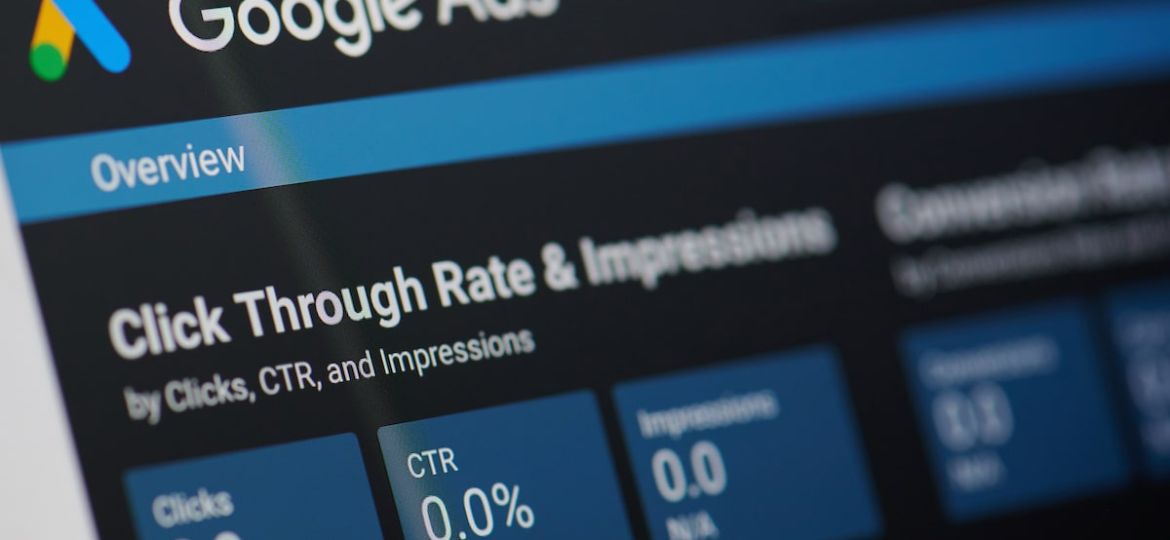
Imagine you’re an advertiser using Google Ads. Your ads are like the vendors at the street fair, and your target audience is like the people walking through the fair. To be successful, you need to know who your target audience is and how to reach them effectively.
That’s where Google Ads audience targeting comes in. With audience targeting, you can reach the right people with the right message at the right time. You can target your ads to specific groups of people based on their demographics, interests, behaviors, and other factors.
In this guide, we’ll explore what you need to know to get started with Google Ads audience targeting, including the different types of targeting available, best practices for targeting your audience, and how to measure the effectiveness of your campaigns.
What Is Google Ads?
Google Ads is an online advertising platform developed by Google that enables businesses to create and display ads to potential customers across the Google Network, which includes Google Search, YouTube, and partner websites. Google Ads operates on a pay-per-click (PPC) model, meaning that advertisers only pay when users click on their ads.
The platform offers a variety of ad formats, including text, image, video, and responsive ads that adjust their size and format to fit different placements. Advertisers can target their ads to specific audiences based on various factors such as demographics, interests, and behaviors, and can set a daily budget and bid on specific keywords to determine how frequently their ads are shown.
Google Ads provides powerful tools and analytics to help advertisers measure the effectiveness of their campaigns and optimize their ad targeting and messaging for maximum impact. With the vast reach of the Google Network and Google Analytics and the ability to target specific audiences with precision, Google ads help businesses looking to increase their online visibility, drive traffic to their website, and generate leads and sales.
Get Started With How Google Ads Work
Google Ads, formerly known as Google AdWords, is a popular advertising platform offered by Google. The platform allows businesses of all sizes to create ads and target specific audiences to drive more traffic to their websites, increasing sales, and improving brand awareness. Here’s how Google Ads work:
Create A Google Ads Account: To start advertising on Google, businesses need to create a Google Ads account. This process involves setting up billing information, creating a campaign, selecting ad types, and targeting options.
Choose Ad Types And Formats: There are several ad types and formats to choose from, including search ads, display ads, video ads, and shopping ads. Search ads appear on Google search results pages, while display ads appear on websites that are part of the Google Display Network. Video ads appear on YouTube, and shopping ads appear on Google Shopping.
Set Targeting Options: Once you’ve chosen the ad types and formats, you can set your targeting options, such as demographics, locations, interests, and keywords. This allows you to reach your target audience more effectively and improve the chances of your ads being seen by the right people.
Set Bids And Budgets: Google Ads works on a pay-per-click (PPC) model, which means that you only pay when someone clicks on your ad. You can set a maximum bid for each keyword or ad group and a daily budget for your campaign. The cost per click (CPC) varies depending on the competition for the keyword or ad placement.
Create Ad Campaigns: Once you’ve set your targeting options and budgets, you can create your ad campaigns. This involves creating ad copy, choosing images or videos, and selecting landing pages. The ad copy should be relevant to your target audience and highlight the benefits of your product or service.
Launch And Monitor Campaigns: After creating your ad campaigns, you can launch them and monitor their performance. You can track metrics or algorithms such as clicks, impressions, click-through rates (CTR), and conversion rates. You can use this data to optimize your campaigns and improve their performance over time.
Types of Audience Targeting in Google Ads Campaign

Audience targeting is an essential part of running a successful Google Ads campaign. It enables advertisers to target specific groups of people who are more likely to be interested in their products or services. In Google Ads, there are various types of audience targeting options available, each with its own benefits and uses. Here are some of the most common types of audience targeting in Google Ads:
Demographic Targeting:
Demographic targeting is a type of audience targeting that allows advertisers to target their Google Ads campaigns to specific groups of people based on their age, gender, household income, parental status, and other demographic information. Demographic targeting allows advertisers to target their ads based on various demographics, such as age, gender, parental status, and household income. Advertisers can use this targeting option to reach their ideal customers and avoid wasting advertising budgets on people who are unlikely to convert.
By targeting specific demographics, advertisers can tailor their messaging and creativity to appeal to the unique needs and preferences of their target audience, increasing the chances of converting potential customers into paying customers. Here are some of the key demographic targeting options available in Google Ads:
- Age: Advertisers can target specific age ranges, such as 18-24, 25-34, or 35-44, depending on the age group that is most likely to be interested in their products or services.
- Gender: Advertisers can target their ads specifically to males, females, or people who don’t identify as either gender.
- Parental Status: Advertisers can target their ads to people who are parents, either to children of a certain age or to specific parenting categories, such as “new parents” or “parents of toddlers.”
- Household Income: Advertisers can target their ads to people based on their estimated household income, allowing them to reach people who are more likely to have the financial means to purchase their products or services.
- Education Level: Advertisers can target their ads to people based on their levels of education, such as high school graduates, college graduates, or people with advanced degrees.
When setting up a Google Ads campaign with demographic targeting, advertisers should carefully consider which demographics are most relevant to their target audience and adjust their targeting settings accordingly, They should also consider what people are searching for in a demographics. It’s also important to regularly review the performance of their campaigns and adjust their targeting as necessary to ensure they are reaching the right people and getting the best possible return on investment.
Geographical Targeting:
Geographic targeting is another important type of audience targeting available in Google Ads. It allows advertisers to target their ads based on specific geographic locations, such as countries, cities, or regions.
Geographic targeting is particularly useful for local businesses or those with specific products and service areas, as it enables them to reach potential customers who are located within their target market. By targeting specific geographic locations, advertisers can tailor their messaging and creativity to appeal to the unique needs and preferences of people in that area, increasing the chances of converting potential customers into paying customers.
Here are some of the key geographic targeting options available in Google Ads:
- Country: Advertisers can target their ads to specific countries or regions around the world, depending on where their target audience is located.
- City or Region: Advertisers can target their ads to specific cities or regions within a country, allowing them to focus their advertising efforts on a particular area.
- ZIP or Postal Code: Advertisers can target their ads to specific ZIP or postal codes, enabling them to reach people who are located within a specific geographic area.
- Radius Targeting: Advertisers can target their ads to people who are located within a certain radius of a specific location, such as their business or a competitor’s location.
Overall, geographic targeting is a powerful tool that enables advertisers to reach their ideal customers within a specific location, increasing the effectiveness of their advertising efforts and maximizing their return on investment.
Device Targeting:

Device targeting allows advertisers to target specific types of devices, such as desktops, mobile devices, smartphones, or tablets. This targeting option is useful for advertisers who want to ensure their ads display correctly on specific device types.
Keyword Targeting:
Keyword targeting enables advertisers to target their ads based on specific keywords or phrases that potential customers might use when searching for products or services online to increase ad rank. Advertisers can use this targeting option to reach customers who are actively searching for their products or services.
Interest Targeting:
Interest targeting is a type of audience targeting available in Google Ads that allows advertisers to target their ads to people who have demonstrated an interest in specific topics, products, or services. Interest targeting is based on users’ browsing and search history, as well as their online behavior, and search terms, and can help advertisers reach potential customers who are more likely to be interested in their products or services.
Here are some of the key interest-targeting options available in Google Ads:
- Affinity Audiences: Affinity audiences are groups of people who have demonstrated a strong interest in specific topics, such as travel, food, or sports. Advertisers can target their ads to these audiences to reach people who are more likely to be interested in their products or services.
- In-Market Audiences: In-market audiences are groups of people who are actively researching and comparing products or services related to a specific category, such as cars, travel, or home appliances. Advertisers can target their ads to these audiences to reach people who are further down the sales funnel and more likely to make a purchase.
- Custom Intent Audiences: Custom intent audiences are groups of people who have demonstrated an interest in specific keywords related to a particular product or service. Advertisers can create custom intent audiences based on their own keywords and phrases, allowing them to reach people who are actively searching for products or services that are similar to what they offer.
Remarketing:
Remarketing, also known as retargeting, is a type of audience targeting available in Google Ads that allows advertisers to target their ads to people who have previously interacted with their website or app. Remarketing can help advertisers reach potential customers who have shown an interest in their products or services but have not yet made a purchase, increasing the chances of converting them into paying customers.
Remarketing allows advertisers to target their ads to people who have previously interacted with their website or app. By targeting people who have already shown an interest in their products or services, advertisers can increase the chances of converting them into paying customers. Here are the key steps involved in setting up a remarketing campaign in Google Ads:
Install The Google Ads Remarketing Tag: Advertisers must first install a remarketing tag on their website or app to track visitors and create remarketing lists based on their interactions.
Create Remarketing Lists: Advertisers can create remarketing lists based on specific pages or sections of their website, as well as specific actions taken by visitors, such as adding items to a shopping cart or abandoning a checkout process.
Set Up A Remarketing Campaign: Advertisers can set up a new campaign in Google Ads and select the remarketing audience they want to target. They can also choose the ad format, bidding strategy, and other settings for the campaign.
Create Remarketing Ads: Advertisers can create custom ads specifically designed for their remarketing audience, such as ads highlighting products or services that the visitor viewed on their website.
Launch The Campaign: Once the campaign and ads have been created, advertisers can launch their remarketing campaign and start reaching potential customers who have previously interacted with their website or app.
Importance Of Keyword And Audience Targeting Search Campaigns

Audience targeting is an essential aspect of online advertising because it allows advertisers to reach the right people with the right message at the right time. By targeting their ads to specific groups of people based on their interests, demographics, behaviors, and other factors, advertisers can increase the effectiveness of their advertising efforts and maximize their return on investment. Here are some of the key reasons why audience targeting is important in online advertising:
Relevance: Audience targeting allows advertisers to ensure that their ads are relevant to the people who see them. By targeting their ads to specific groups of people who are more likely to be interested in their products or services, advertisers can increase the chances of capturing their attention and driving conversions.
Cost- Effectiveness: Audience targeting can help advertisers optimize their ad spend by focusing on the people who are most likely to be interested in their products or services. By avoiding irrelevant impressions and clicks, advertisers can minimize wasted ad spend and get the best possible return on investment.
Personalization: Audience targeting allows advertisers to create personalized ads that speak directly to the interests, needs, and behaviors of their target audience. By tailoring their messaging and creativity to specific groups of people, advertisers can increase the relevance and impact of their ads.
Improved Metrics: Audience targeting can help advertisers improve their key metrics, such as click-through rates, conversion rates, and cost per acquisition. By reaching the right people with the right message, advertisers can increase the chances of driving clicks, conversions, and sales.
Brand Building: Audience targeting can also help advertisers build their brand by reaching the people who are most likely to be interested in their products or services. By consistently delivering relevant, personalized ads to their target audience, advertisers can increase brand awareness and loyalty over time.
Benefits Of Effective Audience Targeting
Effective audience targeting can provide numerous benefits to advertisers. Here are some of the key benefits of audience targeting in Google Ads:
Better Ad Relevance: By targeting your ads to specific audiences on sites and apps, you can ensure that your ads are more relevant to the people who see them. This increases the likelihood that they will engage with your ads and take the desired action, such as making a purchase or filling out a lead form.
Higher Click-Through Rates: Audience targeting can help increase your click-through rates (CTR), which is the percentage of people who click on your ad after seeing it. When your ads are more relevant to your target audience, they are more likely to click on them, which can help improve your CTR.
Improved ROI: Effective audience targeting can help improve the return on investment (ROI) of your ad campaigns. When your ads are more relevant to your target audience, you are more likely to attract high-quality leads and customers who are more likely to convert, resulting in higher revenue and profits.
Reduced Ad Spend Waste: Audience targeting can help reduce the amount of wasted ad spend by ensuring that your ads are only shown to people who are most likely to be interested in your products or services. This can help you maximize the effectiveness of your ad budget and avoid spending money on people who are unlikely to convert.
Increased Brand Awareness: Effective audience targeting can help increase brand awareness by ensuring that your ads are seen by the right people. By targeting your ads to people who are most likely to be interested in your brand, you can help build awareness and recognition for your business.
Improved Customer Experience: Audience targeting can help improve the customer experience by providing more relevant ads and information to your target audience. By providing information that is tailored to the interests and needs of your audience, you can improve their overall experience and increase their satisfaction with your brand.
Best Practices For Audience Targeting In Google Ads
Audience targeting is a critical aspect of running successful campaigns in Google Ads. Here are some best practices for audience targeting that can help advertisers improve the effectiveness of their campaigns:
Understand Your Audience: It’s important to have a deep understanding of your target audience and what motivates them to take action. Use customer research and data to build detailed personas of your ideal customers, including their demographics, interests, behaviors, and pain points.
Use A Combination Of Targeting Methods: Use a combination of demographic, geographic, interest, and behavioral targeting methods to reach the right people with your ads. By using multiple targeting methods, you can create more precise and effective audience segments.

Use Exclusion Targeting: Exclude people who are not relevant to your ad campaign. For example, if you are promoting a product that is only available in certain regions, exclude people outside of those regions from seeing your ads. Exclusion targeting helps to improve the relevance of your ads and can reduce wasted ad spend.
Create Custom Audiences: Use your customer data to create custom audiences based on people who have already engaged with your brand, such as those who have made a purchase or signed up for your newsletter. Custom audiences are more likely to convert and can help improve the efficiency of your ad campaigns.
Use Remarketing: Use remarketing to target people who have previously interacted with your website or app. By retargeting these visitors with personalized ads, you can increase the chances of converting them into paying customers.
Test And Optimize: Continuously test and optimize your audience targeting to improve the effectiveness of your ad campaigns. Monitor your key metrics, such as click-through rates, conversion rates, and cost per acquisition, and make adjustments to your targeting as needed.
Monitor Performance: Regularly monitor the quality score and performance of your ad campaigns to ensure that you are reaching the right people and achieving your advertising goals. Use the insights from your campaigns to refine your targeting and improve your results over time.
By understanding the different types of audience targeting available and implementing best practices, you can improve the relevance and effectiveness of your ads, increase engagement and conversions, and ultimately drive more revenue for your business.
Just like the vendors at the street fair, successful advertising requires knowing your target audience and tailoring your message to their needs and interests. Working with a digital marketing company like GOA-TECH, for your Google Ads audience targeting goes a long way. We take the time to understand your audience, test different targeting options, and measure your results to continually improve your campaigns.











